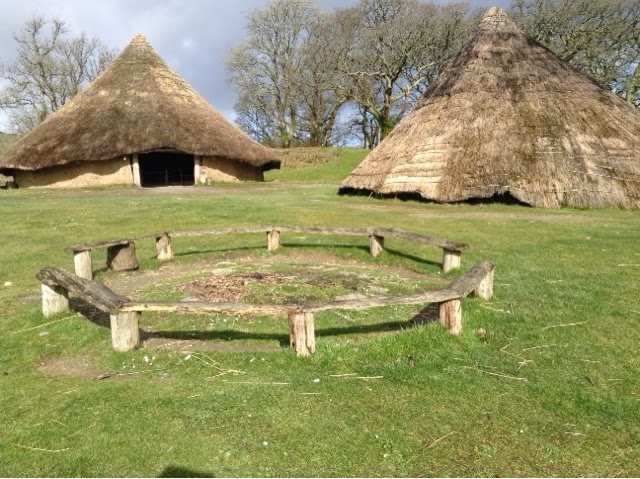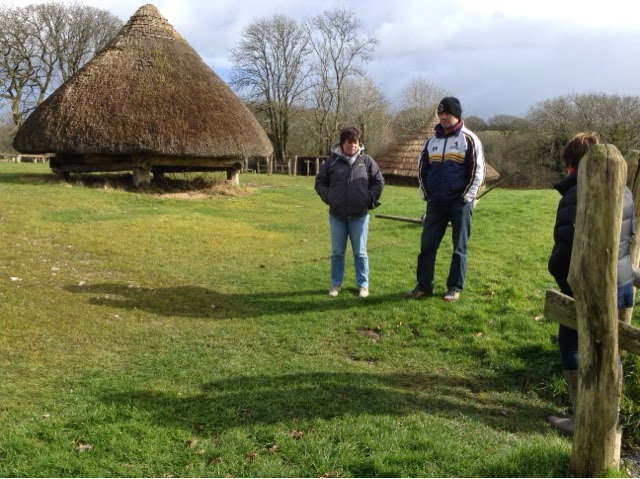Today, Ann and Barry picked us up, and took us on a magical mystery tour. I had no idea where we were going. We headed south, and stopped in Cardigan for coffee and morning tea in an Italian coffee shop. Thereafter, we headed into the Pembrokeshire Coast National Park.
Our first stop was Pentre Ifan, which is the best known megalithic monument in Wales. Pentre Ifan is the remains of a chambered tomb for the communal burial of the dead. It was erected in the Neolithic Age perhaps as early as 3,500 BC. The slope of its capstone (the horizontal stone on top) mirrors that of Carningli Mountain nearby. The monument is reminiscent of the famous Stonehenge in Wiltshire. In fact, archaeologists now know some of the bluestones used in building Stonehenge came from the Pembrokeshire Coast National Park. How they got there 5,000 years ago remains a mystery, a mystery ensuring eternal respect for the people of the Neolithic.
We then moved on to Castell Henllys, which is the reconstruction of an Iron Age village on the top of a hill. Excavations were conducted here between 1980 and 2008. People lived on this site around 2,700 years ago in little round houses with thatched rooves. Modern archaeologists determined exactly where the foundations of the Iron Age houses were located, and 'new' round houses have been constructed on the same foundations, allowing 21st century visitors the same view of the village as those who lived here millennia ago. The houses have been constructed using the same locally sourced materials as in the Iron Age, save for modern rope and other subtle additions to ensure health and safety for visitors.
There are five round houses at Castell Henllys, as well as pens for keeping animals. The houses inside were essentially one large room, although one had little bedrooms to one side. All were warmed by a central fireplace with seating on either side. The smoke filtered through the thatched rooves, discouraging vermin and bugs from living there. People were occupied catching and gathering food which included constructing tools for this purpose, such as the fish trap. It being the Iron Age, many iron tools were made and used in Castell Henllys. People lived in this village for about 500 years.
We had lunch in the Pentre Arms in Llangrannog. This town sits by a stony beach dwarfed by high hillsides. The one at left boasts a statue of Saint Carannog who looks down upon a rough-looking surf as it batters the rocky hillside foundations. The Saint founded a church in Llangrannog between 480 and 540 AD.
On we drove, stopping briefly at the beach in Cwmtydu, before arriving in Newquay. Deciding not to stop, we headed on to Aberaeron, where we enjoyed afternoon tea. We arrived home after 5.
The slope of the capstone mirrors that of Carningli Mountain nearby. The monument is about five metres long.
The highest point of the village
Jean, Ann and Barry discuss how life would have worked here two and a half millennia ago.

















No comments:
Post a Comment